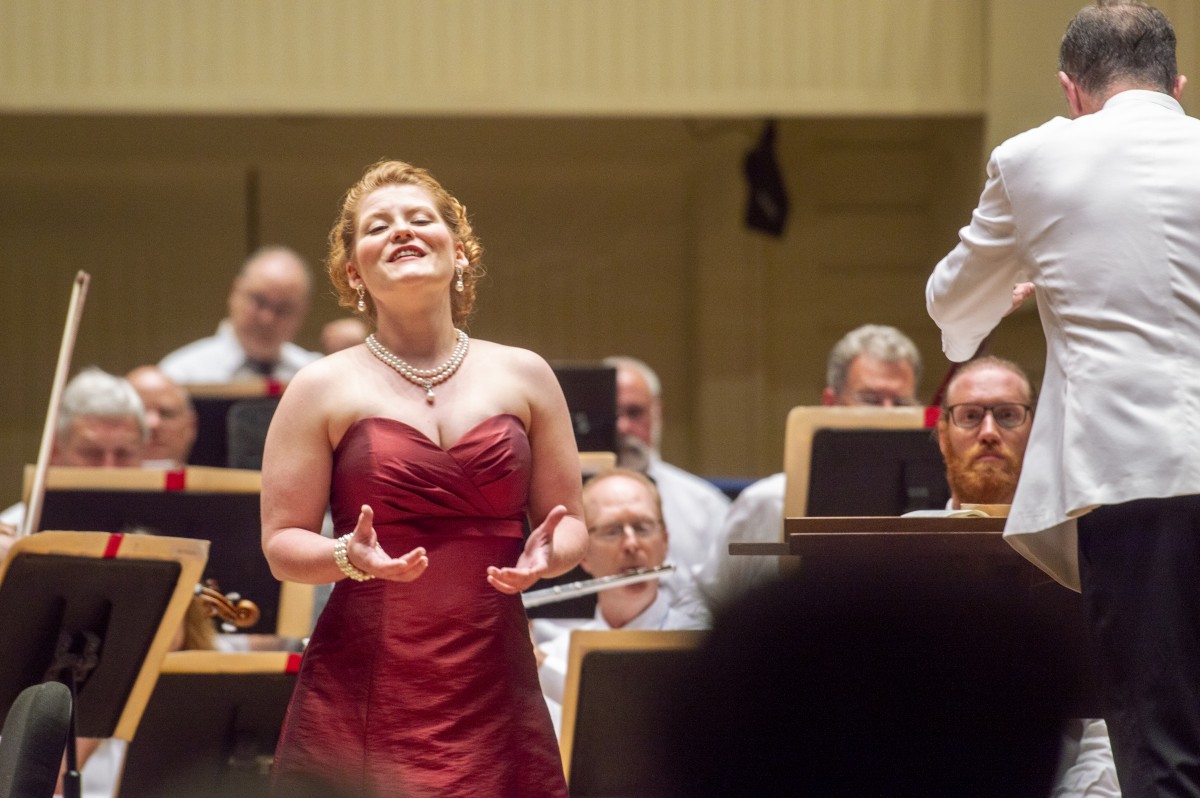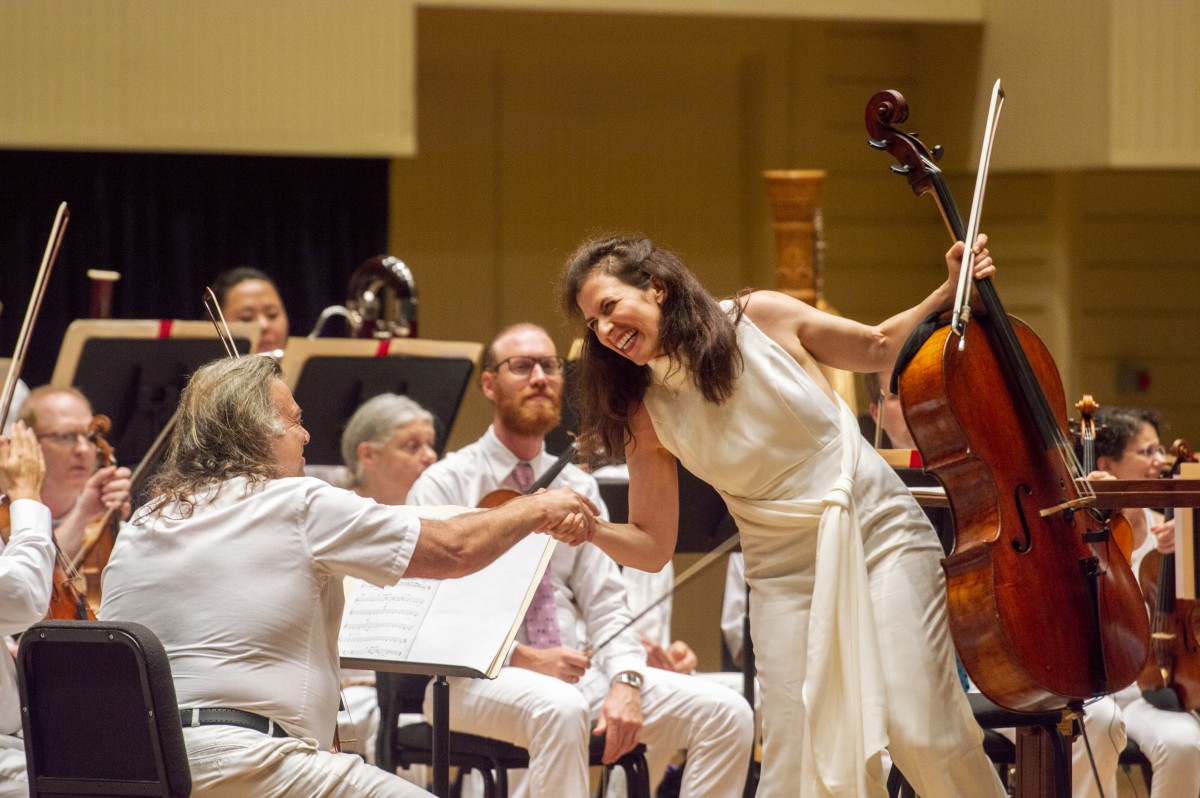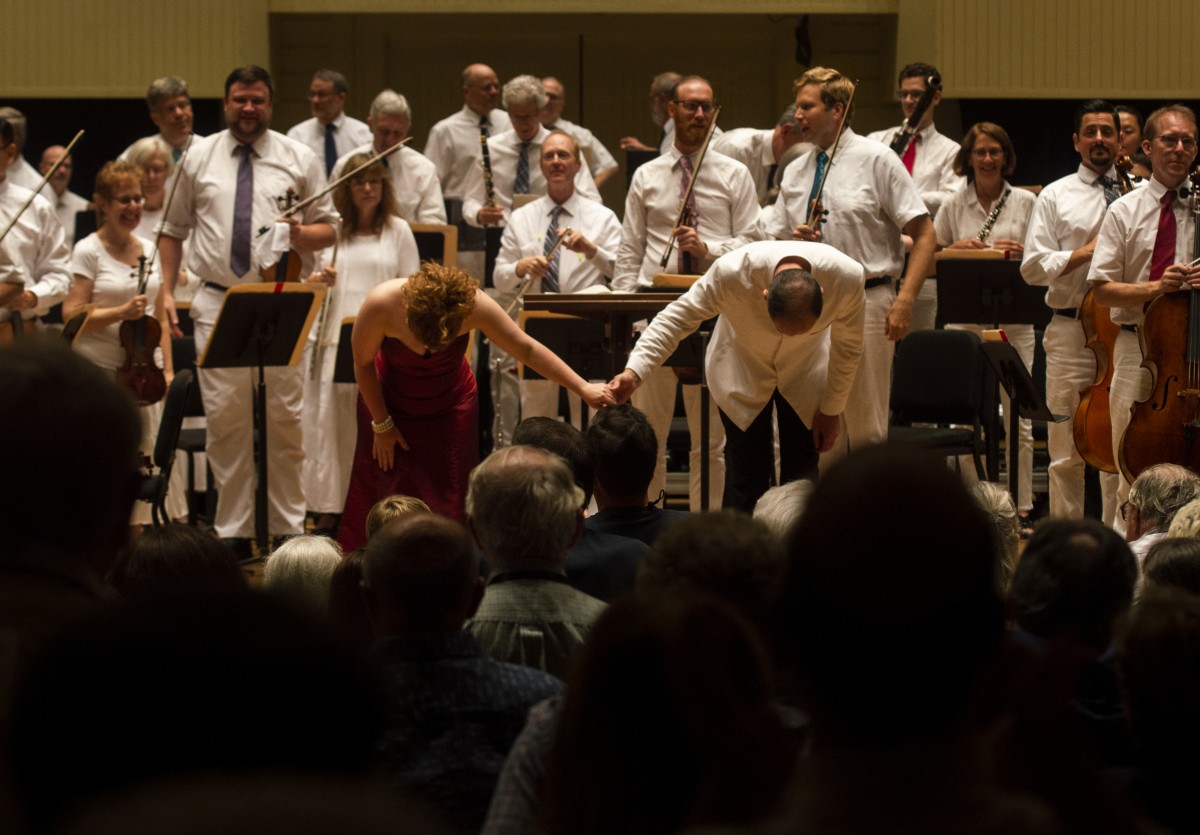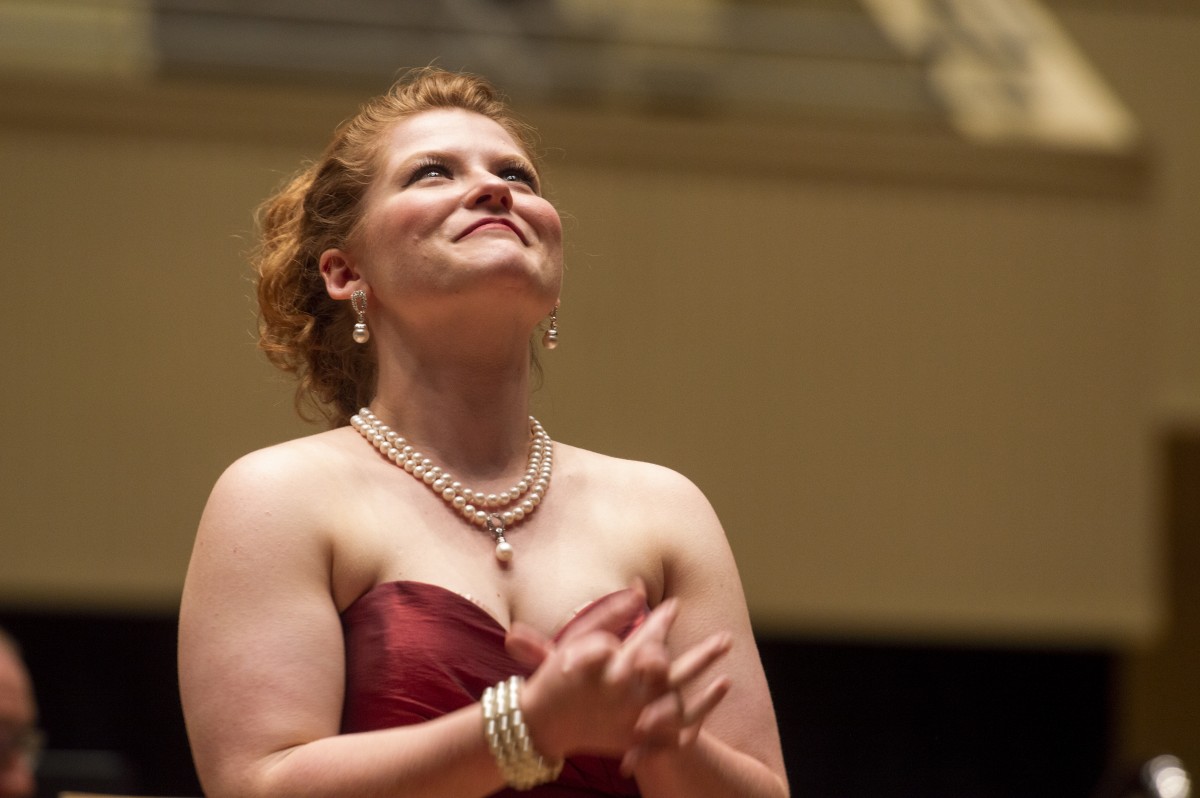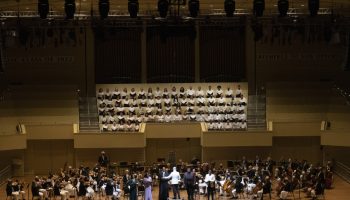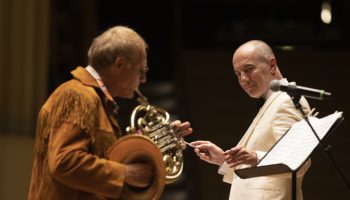Review by Anthony Bannon:
Celebrate a wise new music in its second performance, an art that will be an enduring gift from our age, a struggle with opposites. This is the creation of Anna Clyne’s “DANCE” for cello and orchestra, softly at first, in the strings, an invocation of the evening and introduction of the full breath of the cello, a masterpiece expression of a 17th-century instrument and an important artist, Inbal Segev, honored at the Pablo Casals Festival and acclaimed by orchestras and publics internationally. “DANCE” was written for Segev, drawing upon text by Rumi, the 13th-century Persian poet. Performed here as an East Coast premiere, it was co-commissioned by the Chautauqua Symphony Orchestra, the Baltimore Symphony Orchestra and the Cabrillo Festival in Santa Cruz, California, which presented the West Coast premiere two weeks ago.
For the poet, as for composer and her player, dance is central: It is within the broken-open, in the tearing off the bandage, in the middle of a fight, within the blood, and in the perfectly free — thus the five movements of “DANCE.” The art of sound is filled up and broken open; it is at the edge of silence and at the crest of chaos; it is a dirge and an emergence; it lives within the certainty of familiar melodies and within the ambiguity of the present, as if always in formation.
“Split wood; I am there. Lift up a rock; you will find me there.” –Gospel of Thomas, the Gnostic Bible.
And the cello had begun like a flute, at its highest sounding, then developing — long and throaty, full-bodied, exquisite, taking its measure with the Chautauqua Symphony Orchestra Thursday evening in the Amphitheater. And then, the dance fills with double stops; it fires, swirls, sings with the past. Is it Handel? A folk song? Stately, is it the Sarabande, itself a dance?
“DANCE” recognizes through a glimpse of Charles Ives, an American composer of a century ago, the creation of the 20th century with such as Gustav Mahler, whose work was about music and transcendence, not some simile to wind through trees, morning birds or breaks of thunder. Mahler died in 1911. Clyne was born in 1980, and she, too, introduces words in her work and mixes melodies and atmospheres as if mixing media, pushing ideas to their presumed limits and therein creating a new aesthetic — a new way of being in the world.
Clyne is a genius for our time, knowing that when form meets form — music with words or visual art, or dance, or film — life takes hold, uniquely, as it did at first, where sea met shore. Her work is ever new and anticipated. She is British-born and schooled and now lives in Brooklyn. Herself a cellist, she created “DANCE” for talent her equal.
Soloist Segev held her audience in a profound resonance to experience opposites, melody confronted with turbulence, those moments of the poet, where one feels acutely alive within the sharpness of pain — then surprised by underlying beauty. How apt that Clyne found a way to remember Rumi’s profound dance now, within a world characterized by division, the tension of the full orchestra. The soloist continues, expressing a new form, and giving it away to orchestra, and another and on. These are loops, interlocking like Borromean rings, an ancient sign of strength in unity. Such a victory, this music, a deep horizon. For this time, 23 minutes along, “DANCE” ends, but only after vigorous plucking of strings and bows against wood, harsh and assertive, all hands on deck, swirling and quoting melodies again, quieting within a false ending, a brief climax, and a soft ending after all, a rare understanding, absent the tired trope of a full-tilt climax. From within its surprising and singular frame, “DANCE” acts for its listener as a theory of everything, known and as yet unknown.
There is a sensibility in Clyne’s work that echoes the rich understanding of Mahler, particularly expressed in his Symphony No. 4 in G Major. Completed in 1900, and premiered to an angry audience the year following, Mahler’s Fourth is a forerunner in the 20th century’s declarative break with expectations. Art assumes a fluid shape. The century no longer plays a program of musical imitation of babbling brooks and butterflies gently riding the breeze. Mahler led the way; his work is music itself — music as a reach into the spirit, to those larger notions created by all that nature can give.
To achieve this vision, Mahler worked from past masters, as in the symphony’s Adagio, a vast plane for the strings, well beyond mind’s eye (and ear), as if pure essence. This third movement is among the most memorable adagios, yet under recognized, likely for its exuberant conclusion that breaks the peace. Mahler perceives through his own ear, not the license of a governing academy or school holding the rules. Mahler writes what will become the new rules, rendered, as with Clyne, through their own search.
And both composers use words: Mahler appropriates a series of folk song poems. The poem recognizes both the child’s innocence and the child’s proximity to endgames. Mahler’s fourth and final movement declares in song the doubling nature of humankind. In “The Heavenly Life” the song recognizes the presence of Harrod the Butcher as St. Luke slaughters the ox. The angels lead the lamb to its death.
Still, the food is fine, and the fish come swimming in for their death the day after the fast. Angels bake bread, and “we skip, and we sing.” This is about as good as it gets. Never mind musical babbling brooks, the breeze through the trees, and the joys of morning. Know that the terror of thunder and the fearful chasm of the sublime remain in the underside.
These two works by Clyne and Mahler are tightropes of quick changes, of forces that move mountains, and of calm. CSO Music Director Rossen Milanov carefully, subtly gathered the thin lines of the two compositions and led the orchestra to make sounds grand, gentle and whole: Rare leadership, save for allowing the orchestra to seize and swallow the low register from soprano Rebekah Howell in the concluding fourth movement and its important folk songs. Howell is a Chautauquan, performing here during the past three years with the Chautauqua Opera Company.
Free and rich, lyric, diverse, even contrary, yet always cozy with the supernatural, Mahler’s quest is to discover the supernatural in the face of horrible death. He recognized and embraced discord. The timpani had figured it out. Sound can simply be itself, or it can create melody; it can be left in the air, or it can carry its listener beyond. The rough has exchange with the smooth; the raw may be cooked.
At the last gasp of Mahler Thursday evening, big Chautauqua thunder made contact, and there were torrents and hail.
Anthony Bannon was an arts critic for The Buffalo News. He is director emeritus of the George Eastman Museum and the Burchfield Penney Art Center at SUNY Buffalo State. His writing about the arts appears, according to the Online Computer Library Center, in 42 books, held by nearly 2,000 libraries worldwide.

